
August 20, 2019
Day 1: Santa Barbara Island
Was it a good idea to take up cold water diving again? This question ran through my mind more than once, both in the days of seemingly endless preparations for this trip and as I hung helplessly upside down, bobbing at the surface 5 minutes into the first dive at Sutil, near Santa Barbara Island, one of the Channel Islands off the coast of California near Santa Barbara.
This trip was intended to be in the southern Channel Islands, namely San Clemente and Catalina, which are usually at their sparkling best in summer. On boarding the Vision, Captain Glen, owner of Truth Aquatics, told us a disappointing development: the Navy exerted its prerogative over San Clemente, making it off limits during our trip. Reports from Catalina indicated difficult conditions, resulting in our modified itinerary of Santa Barbara, San Nicolas and Santa Cruz Islands. The conditions were marginal, with the water colder, greener and murkier than usual for August.
We had friends making the trip with us: Nancy and Gerry, who live nearby and our mutual friends, Bob and Debbie, in from Hawaii. They had dove Catalina before, but the rest of the Channel Islands were new to them. As for us, we had once been regulars on the Vision. Back before we began diving Indonesia (further away and requiring 2-3 week stints to make traveling that far worth it), we made multiple 3-5 day trips on the Vision, 2-3 times/year, including spending Thanksgiving on board, year after year over a 10 year stretch.
But that was back in the 1990s, when we were younger, stronger and quite comfortable diving in drysuits. Steve’s intermittently symptomatic back, an infatuation with France and life, the universe and everything conspired to keep us warm water diving for 10, maybe 15 years; could we make a cold water comeback?
We started this odyssey the prior summer, doing a 3-day Labor Day trip armed with a new drysuit for me, a refurbished drysuit for Steve, new dive computers and 2 new camera systems. It was an ambitious agenda. I ended up having to wetsuit dive after overzealously trimming my neck seal.
This made me extremely paranoid preparing for this trip, taking a full week to cautiously trim one ring at a time, stretching the seal over a traffic cone. I was surprised wielding a scalpel on a rubber seal could actually make me nervous.
It likely was the height of optimism to have headed into the water with the camera, in a new drysuit, wearing only 16 pounds of lead. I thought at worst I could pull myself down the bow anchor line to depth. In fact, I would still have to do this on subsequent dives, despite adding ankle weights (2 pounds each), and eventually working my way up to 24 pounds.
How I ended up upside down, unable to right myself: In a drysuit, air must be added to the suit while descending, to counteract the shrink-wrapped contraction of the suit that the increasing depth and water pressure induces. The air introduced into the suit has to be managed to keep oneself upright. Unable to descend with 16 pounds, I headed back to the swim step and had one of the deckhands put ankle weights around the neck of the tank. Most ankle weights are one pound each; I didn’t realize the weights they grabbed from our box were 2 pounds apiece, throwing my center of gravity posterior. Unable to descend foot first, I grabbed the line and started to pull myself down headfirst. Air shot into my boots. Not wearing ankle weights, there was nothing to keep the air from popping into my boots.
Knowing I was at the surface, I was alarmed but not panicked. Try as I might, I couldn’t flip myself over while hanging on to the camera. Not being that far from the boat, I knew it would look like I was in trouble. It didn’t help that one hand was occupied with the camera. I tried tucking into a ball to force air out of the legs but to no avail. After a while, Brittany appeared in the water beside me with a flotation ring and taking the camera, righted me and escorted me back to the back of the boat. I transferred the ankle weights from the tank onto my ankles and did a short dive, sans camera, pulling myself down the line.
Armed with more weight, the second dive started out better. I went down the bow line. I still had to pull myself down but stayed upright with the aid of ankle weights. Down at 50 feet depth, the dive began well enough, but soon I found myself clutching at rocks to stay down. Debbie suddenly appeared at my side, with one of my weight pouches! Somehow, it had fallen off, with 5 of my 22 pounds! No wonder I couldn’t stay down. It was a flail with me trying to replace it and Debbie holding my camera ; then we swapped and she succeeded in replacing it.
The other component of disaster dive #2 was once my buoyancy was stabilized, my strobes wouldn’t fire. Both showed red glowing lights, indicating they had battery power. The diagnosis became clear back on the boat: the flash trigger inside the camera now glowed red instead of the reassuring green indicating an adequate battery. Its long-lasting battery had finally given it up.
Dive number 3 was the first dive I could truly call a dive, not a struggle. The deeper bottom was carpeted with brittlestars.
Dive number 4 was alongside a sea lion rookery. Many could be seen hauled out on the rocky slopes of the island. In a clearing in the kelp at the end of the anchor line, Nancy, Gerry and I were treated to quick buzzes from a dive bombing sea lion.

These sea lions dart in and away devilishly fast! (Santa Barbara Island, Channel Islands, California)
Wednesday, August 21, 2019
Day 2 Santa Barbara Island
I spent the day still trying to fine tune my buoyancy with this new DUI drysuit. Today’s combination was long underwear under my Polartech jumpsuit with 6 pounds in each front pocket, 4 pounds in each tank pocket and initially, 1 pound ankle weights, and still later, 2 pound ankle weights.
We started the day near Sutil Island, with our last 2 dives at Shag Rocks. I managed 4 and Steve 3. Steve had solo black sea bass visitation on the 2cd dive.
I had to wait to see one until the 3rd dive, with the 4th even better, just me and Bob being repeatedly and slowly circled by a mammoth lumbering giant black sea bass.

Giant sea bass populations may be recovering since conservation legislation was enacted in 1982 after the species was driven to near-extinction.
Even Captain Glen was jazzed, repeatedly feeding the curious and apparently hungry black sea bass with fish skewered on his pole spear.
Despite the difficult conditions , Steve produced a gorgeous series of kelp abstracts:
Thursday, August 22, 2019
Day 3 Santa Barbara Island
3 dives
Thick kelp snarled around my fins, camera arms, and strobes, en route to the surgy bottom. It was so murky, I was reluctant to be off the line as the visibility was terrible.
Our last dive was to a deeper and colder plane at 70 feet, which was carpeted with brittle stars, a fuzzy shag living carpet, dotted with kelp. I had a quick buzz by a sealion.
Bob and Gerry were among the few night divers. Per Gerry, it was comparable to the day dives: “cold and wet and surgy, but dark”.
There was entertainment up on the boat, watching the flying fish, drawn by the boat’s lights and an abundance of the kelp flies which had been dogging us on board, skipping over the water with sea lions in hot pursuit.
Friday, September 23, 2019
Day 4, San Nicolas
We awoke at San Nicolas, which is also under control of the military. Thanks to an incident in which Mexican cartel refugees breached the shore, there is an exclusion zone of 300 yards off the coast. The island appears to be barren brown hills, but the surrounding waters were enlivened by sea lions darting around in the kelp.
In my continuing quest to sort out this drysuit, I switched back to the puffy quilted Thinsulate jumpsuit, with 2-pound ankle weights and 20 pounds in BCD.
Dark, murky, green and surgy water led me to break out my as yet unused CMC macro set-up.
It was tough going. There was no lack of subjects, but the surge meant that just as I closed in on a subject, it would move me out of position, so I’d have to start again, find a subject, stabilize, move the lens closer, closer, almost there, then gone! as the surge snatched me back. Nudibranchs were either covered up by adjacent algea or bent into strange positions. It was a struggle.
Saturday, September 24, 2019
Day 5, Santa Cruz, Northern Channel Islands
Overnight, we motored north towards Santa Barbara, reassuring me we will make our return 7 pm train. We elected to do only one dive, with some managing 3 before we headed back to Santa Barbara after lunch.
Our crossing was an easy, peaceful one. While we Ubered to the train station, Nancy, Gerry, Bob and Debbie were involved with the intricacies of packing Gerry’s Toyota truck with 4 sets of dive and camera gear, plus our tanks, weights and 2 dive gear bags.
We had enough time before our train for me to forage for food and for Steve to fly the drone back over the beach.
Tyger Tyger was down the street from the station, south of State Street, on a street lined with wine bars and beer gardens and bursting with happy hour patrons. The brisket bahn mi sandwiches and green papaya salad were a delicious finale to our trip, which had featured consistently delicious offerings, including a Thanksgiving worthy turkey dinner the night before and home-made potpies made with the left-over turkey for lunch.
Postscript: Monday, September 2, 2019
There is a very sad and tragic coda to our very pleasant and happy trip with friends: On Labor Day, a week after disembarking, we were in Sedona heading out for a short local hike when our phones started sounding off, repeatedly, with inquiries from friends in London, Montana, Hawaii and San Diego, asking if we were alright, our first clue that something terribly wrong had happened in the Channel Islands. Images of the Conception, sister ship to the Vision, engulfed in flames off the coast of Santa Cruz Island, made us gasp in horror. As the details emerged, the full extent of the catastrophe became clear: a boat full of divers, sleeping below decks, on a ship suddenly and uncontrollably on fire. The crew, sleeping up top, managed to escape by jumping in the water and swimming to the dingy, which they used to make their way to a nearby fishing boat, The Grape Escape. Although we didn’t know any of the individuals on board, we know well these type of adventure-loving people, the hard-working and conscientious crew, the thoughtful and caring owner well enough to feel the immensity of a tragedy so enormous and raw we’re still trying to process it and failing miserably.

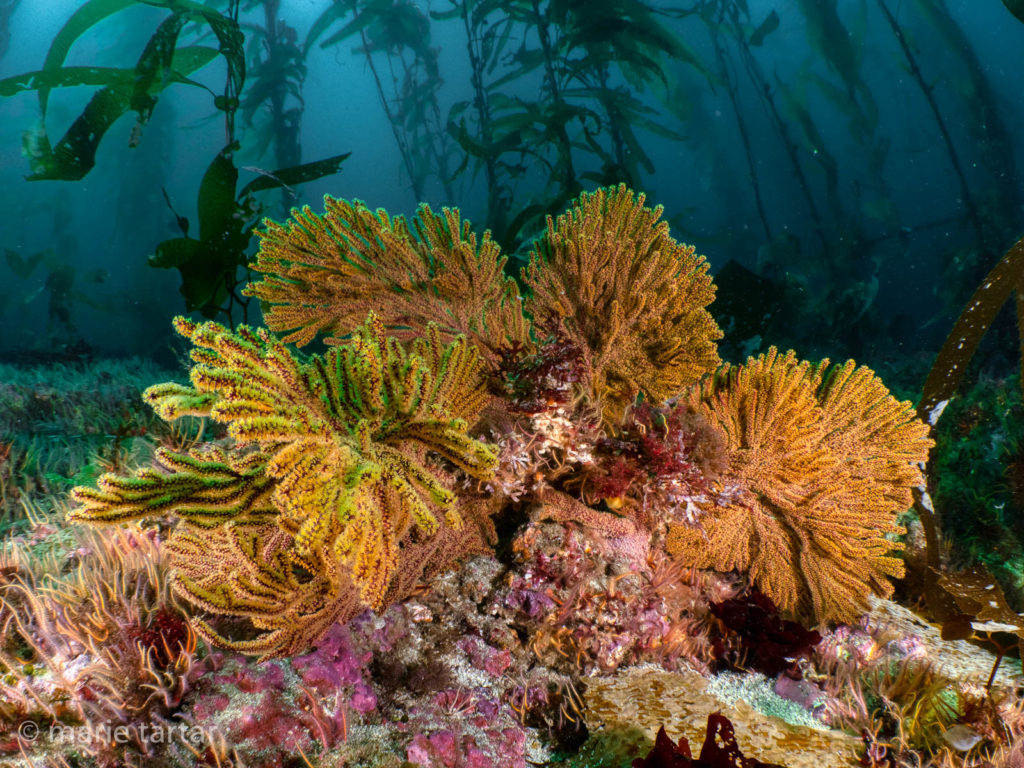
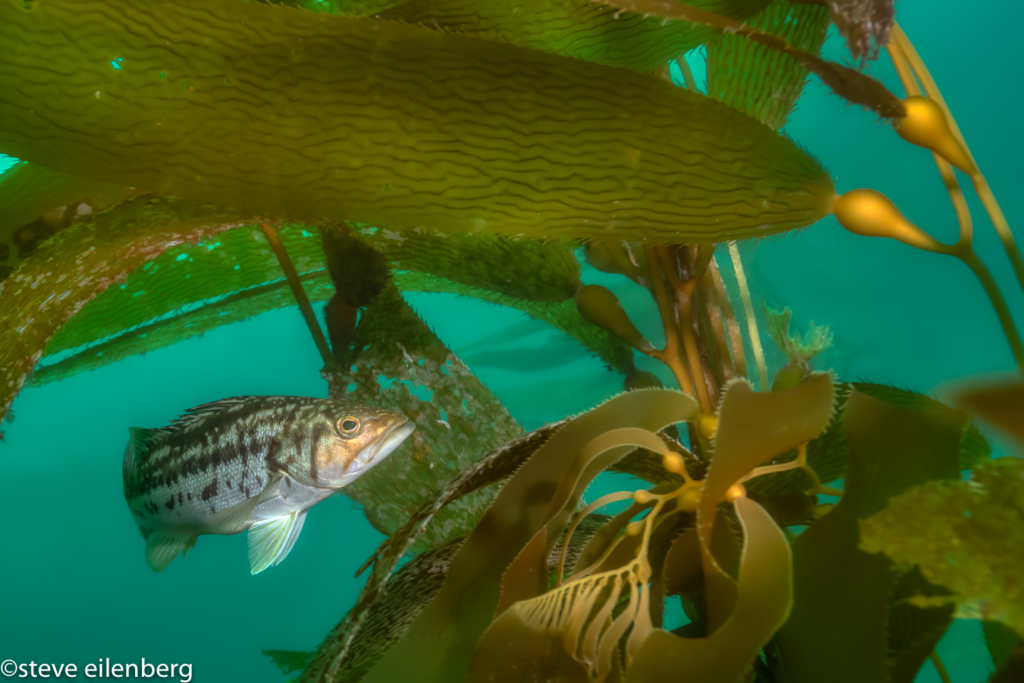
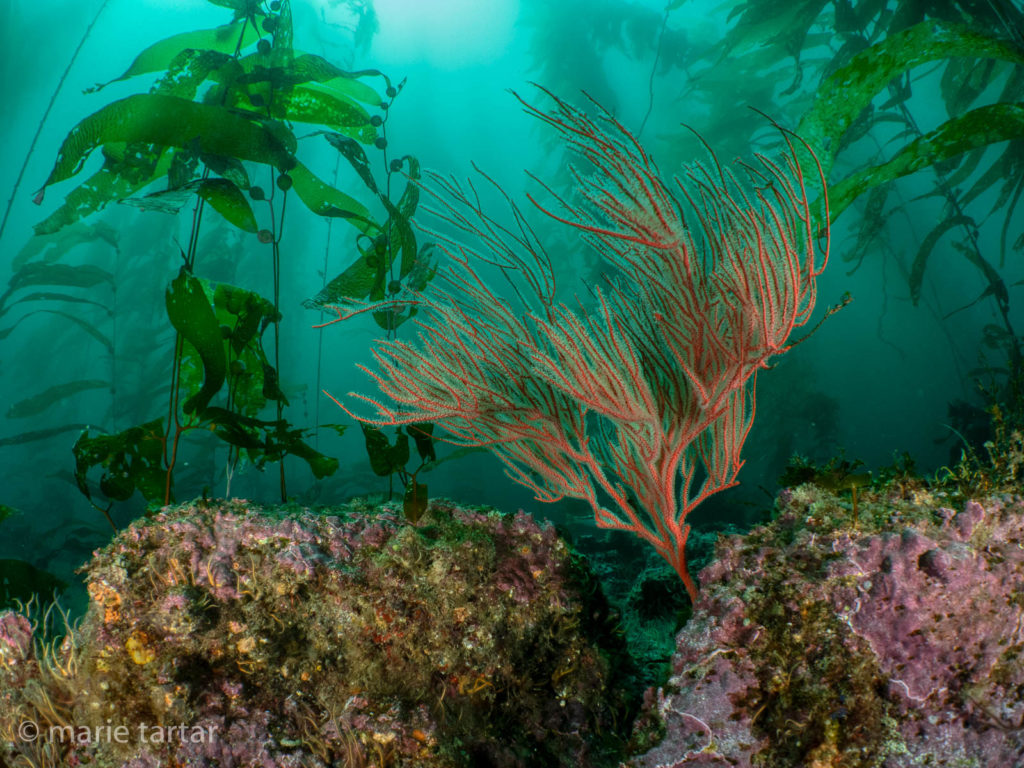

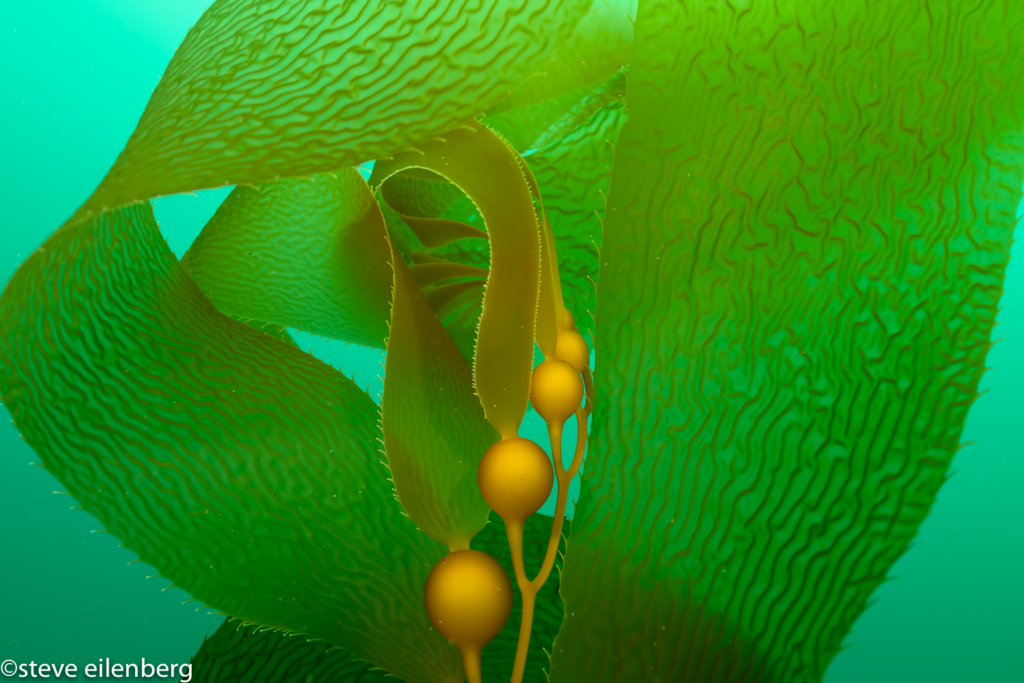


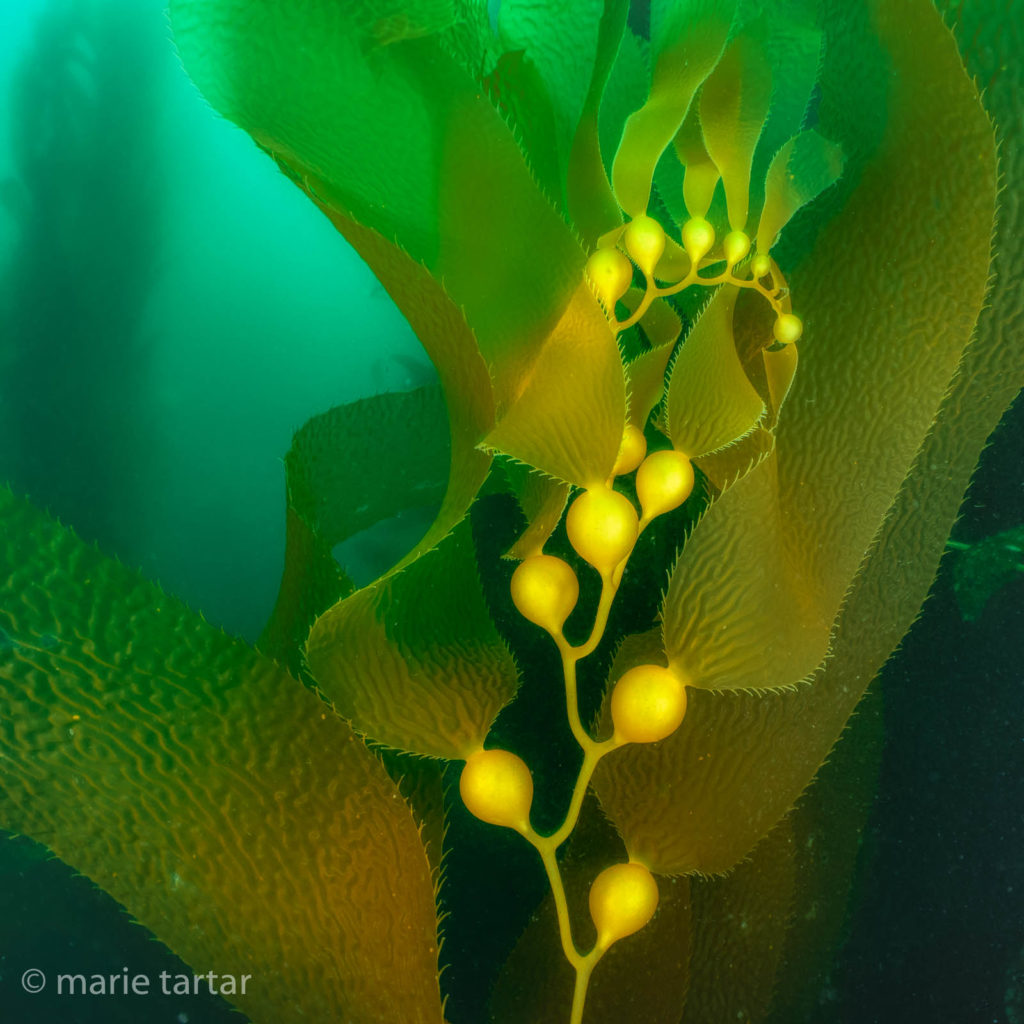


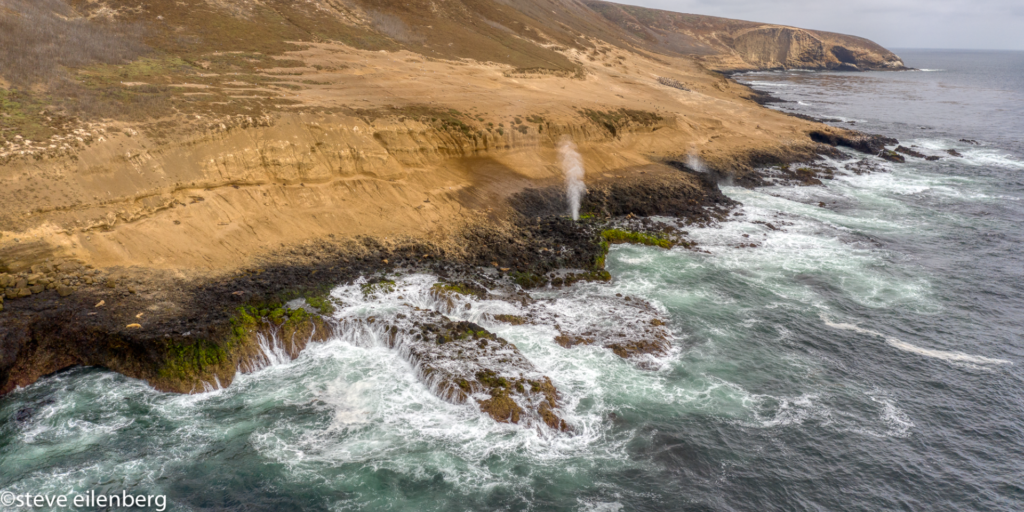
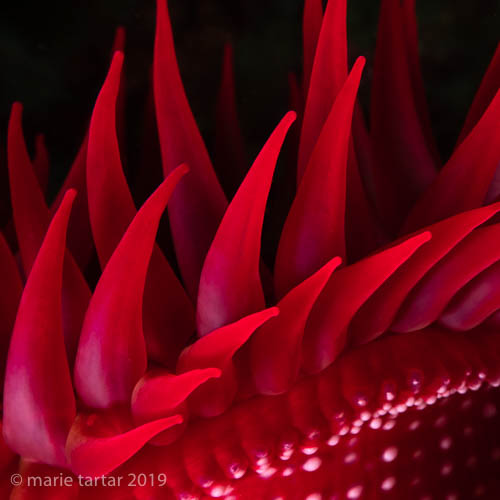
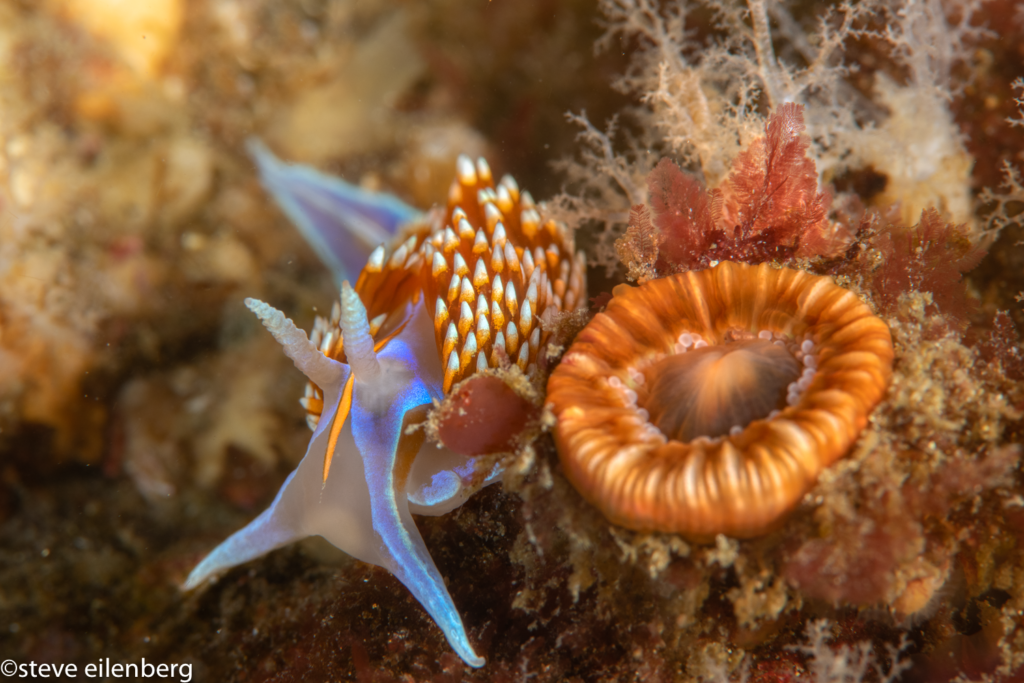
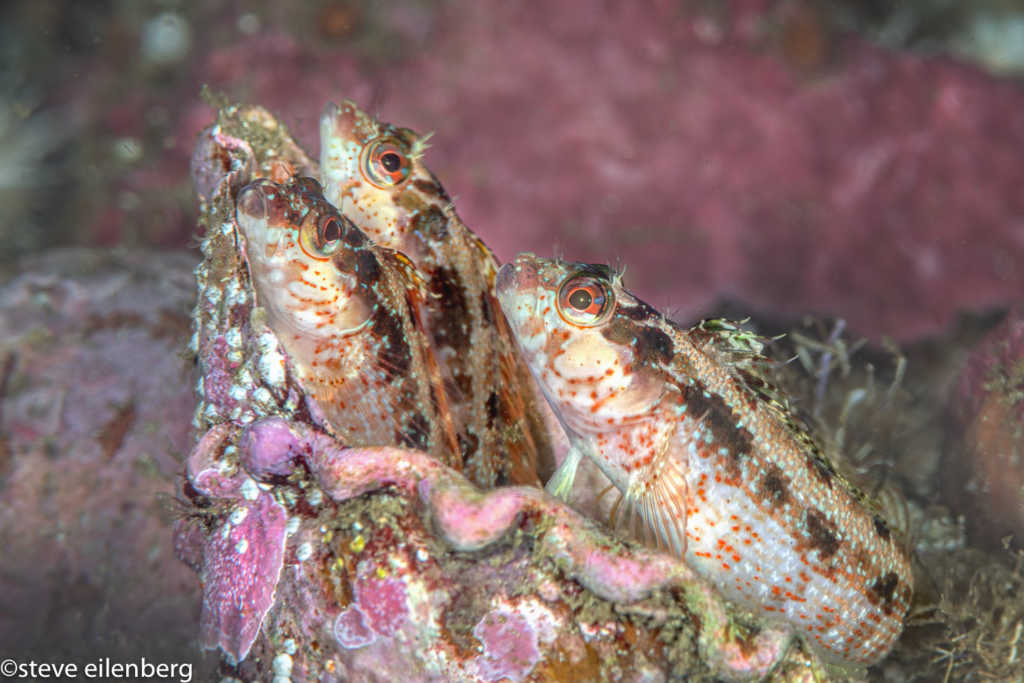


The kelp closeups are art pieces.